Table of Contents
IBPS PO Mains Quantitative Quiz
Quantitative Aptitude can enhance your performance as a whole. All you need to do is clear your basics first and practice more and more. Quantitative Aptitude is a subject that helps you to boost your score and confidence. Every year IBPS comes with changes in the pattern of questions on Quantitative Aptitude which makes it difficult for students to decode in the examination hall. Giving mocks and Quizzes on a regular basis will help you to crack every change in the pattern. Adda 247 gives daily quizzes for practice as the IBPS PO Mains is scheduled for 30 November. Here is the IBPS PO mains Quantitative Aptitude Quiz of 29th October 2019.
Directions (1-5): Find out the approximate value which is closest to the value that should replace the question mark (?) in the following questions.
![]()
(a) 26
(b) 20
(c) 49
(d) 30
(e) None of these
![]()
(a) 73
(b) 81
(c) 36
(d) 42
(e) 29
![]()
(a) 4
(b) 9
(c) 17
(d) 27
(e) 29
![]()
(a) –2
(b) 3
(c) 2
(d) –3
(e) 4
![]()
(a) 50
(b) 60
(c) 70
(d) 80
(e) 48
Directions (6-9): Bar graph shows the number of fans produced (in hundreds) by a manufacturer in the period of four months i.e. from January to April.

Shopkeeper has to decide whether to test or not all the units of fans before sending them to the customer. If he has decided to test he has two options.
(a) Option I
(b) Option II
Option I : – It cost Rs 2.50 per unit as testing cost but this method of testing allows 30% of defective fans to pass to the customer.
Option II : – It cost Rs 4 per unit as testing cost and it find 90% of defective units
→ All defective units identified at the customer end, will causes a penalty of Rs 60 per units. Which are to be paid by shopkeeper. Defective units found during testing are repaired at Rs 20 per unit.
Q6. Shopkeeper uses option I testing in March month and incurs repairing cost of. Rs 5600. Then find number of defective fans in March is what percent of total manufactured fans in that month?

Q7. For February month, find the difference of the extra (i.e. total of testing ,repairing cost and penalties) incurred by the shopkeeper. For the both options if 150 units are defective in that months.
(a) Rs 1000
(b) Rs 1200
(c) Rs 1250
(d) Rs 1400
(e) Rs 1350
Q8. Find ratio of all defective units of January to April months if in January he uses option I for testing and in April, option II as testing. Repairing cost of April is Rs 5300 more than that of January where as penalties for January is Rs 900 more than that of April
(a) 3 : 8
(b) 2 : 5
(c) 11 : 18
(d) 4 : 9
(e) 8 : 15
Q9. In May, shopkeeper uses option II for testing the whole units of fans produced and he has to pay penalties of Rs 1620 to the customer. Then, find the total units of fans manufactured in that month if total defective units are 25 5/7% in that month.
(a) 980
(b) 1050
(c) 1071
(d) 1106
(e) 1120
Q10. Four inlet pipes A, B, C & D filled a tank in 12.8 hours together. Table shows percentage of tank filled by each pipe. If pipes B & C are made to work as outlet pipes, then find time required to fill the tank when all four pipes opened together.

Q11. The ratio of average of two series of five numbers each is 2:3. All five terms of the former series are consecutive multiples of 4 while all five terms of the latter series are consecutive multiples of 6. If sum of their first term is 20, then find the difference between greatest term of series divisible by 6 and second greatest term of series divisible by 4?
(a) 16
(b) 12
(c) 10
(d) 14
(e) 8
Q12. A sum of Rs ‘x’ becomes Rs (x + 528) in two year at the rate of 20% p.a compounded annually. if Veer invested Rs 2.5x at 15% p.a. on SI for three years and Ayush invest Rs 1.5x at 10% on CI for two years, then find the ratio of interest got by Ayush to that of Veer?
(a) 4 : 25
(b) 6 : 25
(c) 8 : 25
(d) 7 : 25
(e) None of these
Q13. Distance between point A and Delhi Airport is 3600 km. If a pilot gets late by 50 minutes then to reach Delhi Airport from point A at scheduled time, he has to increase the speed of plane by 20%. Then find distance traveled by plane in 3 hr 45 minutes, if it travels with increased speed?
(a) 2840 km
(b) 3240 km
(c) 3280 km
(d) 3640 km
(e) 3840 km
Q14. Sandeep is going from Dehradun to Mussoorie and the road is both uphill and downhill (means no straight road) and Sandeep’s average speed is 36 km/hr on uphill and 72km/hr on downhill. Find the distance between Dehradun to Mussoorie if he takes 7 hr to make a round trip?
(a) 240 km
(b) 216 km
(c) 120 km
(d) 168 km
(e) 144 km
Q15. There were two solid spherical balls. Ratio between radius of first ball to that of second ball is 4 : 3. Second ball was cut into two equal halves and the difference between total surface area of first ball and total surface area of a part of second ball is 1424.5 cm². Find value of radius of bigger ball ?
(a) 14 cm
(b) 16 cm
(c) 10.5 cm
(d) 20 cm
(e) 28 cm
Solution









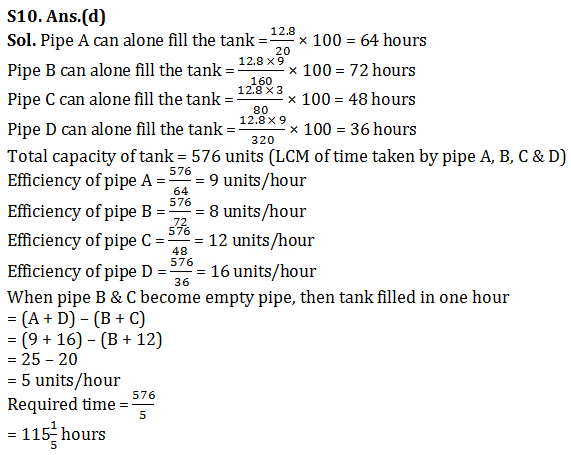

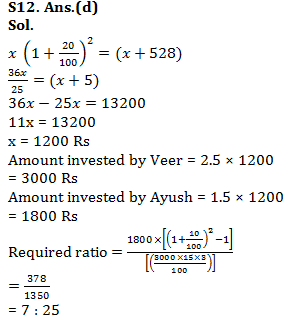
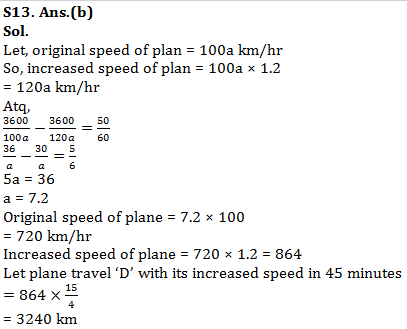
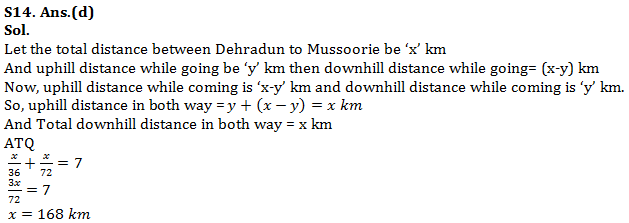

For 200+ most important arithmetic questions
- Quantitative Aptitude Study Notes for Bank Exams
- 100 MCQs Data Interpretation | Download Free PDF’s of DI
- Quantitative Aptitude Questions for all Competitive Exams

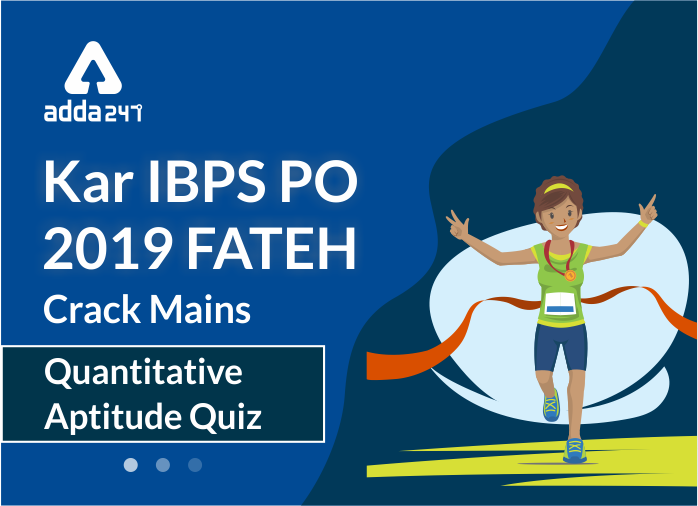



 GA Capsule for SBI Clerk Mains 2025, Dow...
GA Capsule for SBI Clerk Mains 2025, Dow...
 The Hindu Review October 2022: Download ...
The Hindu Review October 2022: Download ...
 Hindu Review March 2025, Download Monthl...
Hindu Review March 2025, Download Monthl...





